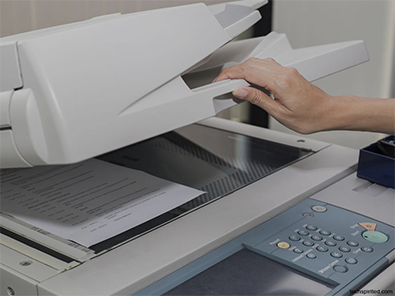Tokyo, April 1, 2014 –
Ricoh Co., Ltd. and a collaborative research team successfully evaluated the charge distribution of insulating particles,
i.e. model toner particle for multifunction printers (MFPs).
The knowledge obtained through this work has the potential to lead MFP print to even higher image quality
and maintain quality for a longer time.
Visualization of the electrostatic potential distribution around the toner particles,
including the facing area between the toner and carrier particles has been a long-standing challenge
for improving image quality and systems of electrophotographic MFPs. The electrostatic interactions
of each single toner particle and a carrier particle is thought to greatly affect print quantity.
So storing the knowledge of the charging mechanism in insulating particles is essential work.
Up until now, the charge of the particles has been conventionally analyzed subject to the average charge of many particles,
because of the lack of an appropriate method to correctly evaluate the charge of a single particle.
In this work, an electron holographic method was developed for visualizing the electrostatic potential of
insulating charged particles individually. A combination of patterned mask plate to shield the sample
from the incident electrons and split-illumination electron holography to reduce perturbation of
the reference wave enable us to analyze the charge distribution of a toner particle more precisely.
This research was supported by a grant from the Japan Society for the Promotion of Science (JSPS)
through the “Funding Program for World-Leading Innovative R&D on Science and Technology (FIRST Program),”
initiated by the Council for Science and Technology Policy (CSTP).
This work was performed under the Cooperative Research Program of “Network Joint Research Center for Materials and Device”
from the Ministry of Education, Culture, Sports, Science and Technology (MEXT).
The results of this research were published in the online issue (dated March 31) of
the American science journal “Applied Physics Letters“.
Also in fiscal year 2014, we will participate in the collaborative research hub of RIKEN and Tohoku University.
The work is expected to support our prime business and related new business in the scientific technology points of view.
Reference
Toshiaki Tanigaki, Kuniaki Sato, Zentaro Akase, Shinji Aizawa, Hyun Soon Park, Tsuyoshi Matsuda,
Yasukazu Murakami, Daisuke Shindo, and Hiromitsu Kawase,
“Split-illumination electron holography for improved evaluation of electrostatic potential associated with electrophotography,”
Applied Physics Letters, 2014, doi:10.1063/1.4869830
| About Ricoh |
Ricoh is a global technology company specializing in office imaging equipment, production print solutions, document management systems and IT services. Headquartered in Tokyo, Ricoh Group operates in about 200 countries and regions. In the financial year ending March 2013, Ricoh Group had worldwide sales of 1,924 billion yen (approx. 20 billion USD).
The majority of the company’s revenue comes from products, solutions and services that improve the interaction between people and information. Ricoh also produces award-winning digital cameras and specialized industrial products. It is known for the quality of its technology, the exceptional standard of its customer service and sustainability initiatives.
Under its corporate tagline, imagine. change. Ricoh helps companies transform the way they work and harness the collective imagination of their employees.
For further information, please visit www.ricoh.com/about/


